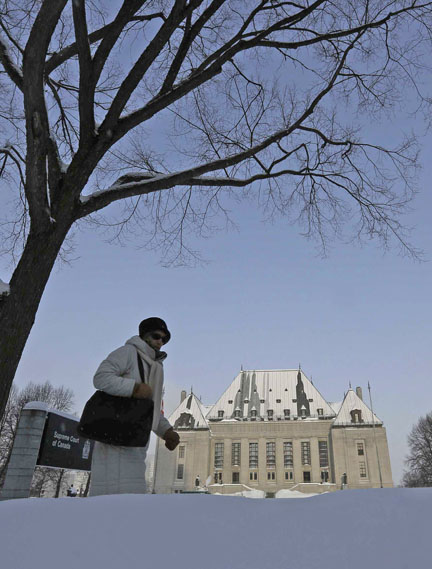Criminal defence counsel are not subject to the high standard Crown prosecutors have to meet when leading evidence at trial, the Supreme Court of Canada ruled today in a high-profile appeal stemming from the murder of Winnipeg teen Candace Derksen.

In 1984, Derksen’s body was found frozen in a shed where she had been bound with rope and left to die. The notorious cold case was only revived when fresh DNA evidence led to charges against Mark Edward Grant.
Grant denied any involvement. At trial, his lawyers attempted to establish an alibi, bringing forth new evidence relating to a similar incident that occurred nine months after Derksen’s disappearance, where another girl had been tied up and left in an abandoned boxcar.
Using the established legal test for Crown prosecutors, the trial judge weighed the evidence — including sworn testimony from the victim, now an adult, that no abduction had in fact taken place — and refused to admit the defence’s theory into evidence.
That refusal, according to the Supreme Court’s unanimous decision today, constituted a serious legal error and an invasion of the jury’s domain:
“The trial judge may not invade the province of the jury and determine the strength of the evidence,” the decision states. “The evidence that G could not have committed the offence against W and the evidence of similarities between the two offences would have provided some evidence capable of giving the unknown third party suspect defence an air of reality.”
Today’s judgment in
R. v. Grant, written by Justice Andromache Karakatsanis on behalf of the court, makes clear that evidence presented by defence counsel is always admissible where: (1) the evidence is relevant to a fact in issue; and (2) the probative value of the evidence is not substantially outweighed by its prejudicial effects.
The trial judge may determine whether a relevant connection has been made and whether the evidence will prejudice the trial — but any judgments as to the strength of the evidence must be left to the jury.
Saul Simmonds, who represented Grant, says the trial judge’s denial of evidence was “traumatic” to the case and ignored a plausible alternative that would have provided the jury with plenty of reasonable doubt.
“Much of the evidence that we would have proposed had been a result of a police files, police investigators . . . photographic evidence, a statement from a woman who had actually found the second girl,” he says. “It would have been up to a jury to weigh and should not have been weighed by the trial judge
In fact, Simmonds says a bigger problem may be that defence counsel in many instances aren’t even aware of similar cases that might provide an alibi or exonerate their clients.
“There was only a line in thousands and thousands of pages of disclosure material that made reference to the second [alleged abduction],” he says, “and it came to our attention as we got close to the trial.”
Simmonds calls on Crown prosecutors to recognize the onus placed on them to disclose such evidence:
“There are going to be cases where that kind of evidence must be disclosed, whether they think that there is a tightly tied connection or not, because the final decision of whether or not the nexus is there is not the Crown’s or the police investigator’s. It is the judge’s decision whether to determine that the nexus is sufficient.”
Defence counsel, meanwhile, must be vigilant for references within investigative documents that even hint at similar incidents, even when the connection isn’t made clear by Crown disclosure materials. To stress his point, Simmonds cites the landmark exoneration of David Milgaard, who spent 23 years behind bars for the murder of Gail Miller.
“If Milgaard in his first trial had been aware of what transpired with Fisher, would Milgaard have been in that position? Would we have been faced with a wrongful conviction?”
The top court ordered a new trial for Grant.

 In 1984, Derksen’s body was found frozen in a shed where she had been bound with rope and left to die. The notorious cold case was only revived when fresh DNA evidence led to charges against Mark Edward Grant.
In 1984, Derksen’s body was found frozen in a shed where she had been bound with rope and left to die. The notorious cold case was only revived when fresh DNA evidence led to charges against Mark Edward Grant.